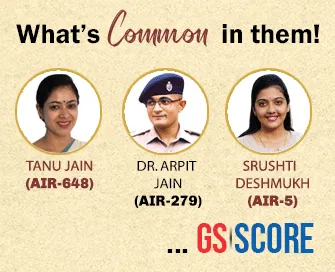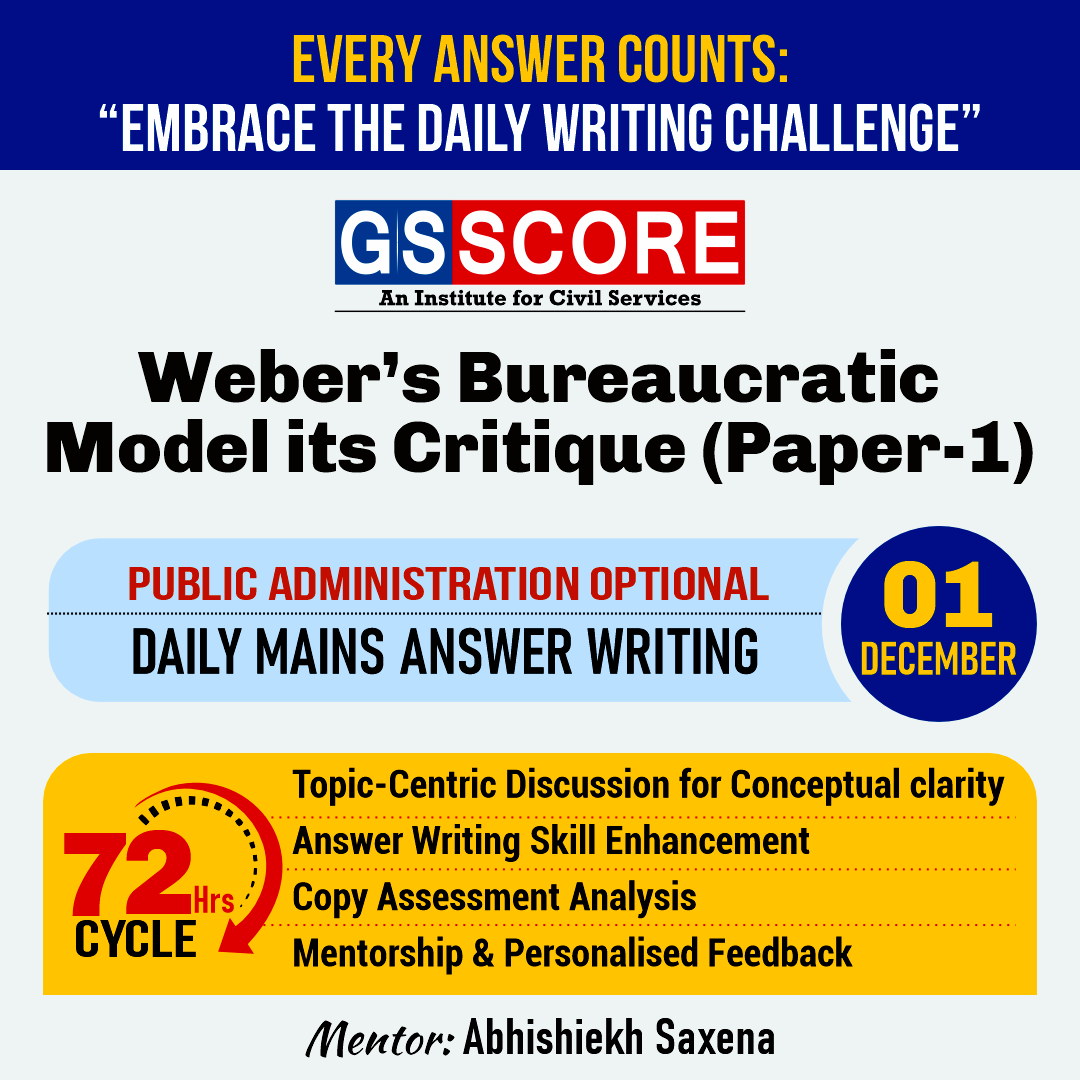


Instruction:
- There will be 2 questions carrying the First Question is-10 marks Write your answers in 150 words and the Second Question is-15 marks Write your answers in 250 words.
- Any page left blank in the answer-book must be crossed out clearly.
- Evaluated Copy will be re-uploaded on the same thread after 2 days of uploading the copy.
- Discussion of the question and one to one answer improvement session of evaluated copies will be conducted through Google Meet with concerned faculty. You will be informed via mail or SMS for the discussion.
Question #1. Weber’s “Iron Cage rationality” is manifested in E- Governance. Comment. (10 Marks)10 marks (150 words)
Question #2. Point out Irrational elements in Weber’s ‘legal-rational’ model. 15 marks (250 words)
(Examiner will pay special attention to the candidate's grasp of his/her material, its relevance to the subject chosen, and to his/ her ability to think constructively and to present his/her ideas concisely, logically and effectively).
STEPS & INSTRUCTIONS for uploading the answers
Step 1 - The Question for the day is provided below these instructions. It will be available at 7:00 AM.
Step 2 - Uploading of Answers : Write the answer in A4 Sheet leaving proper margins for comments and feedback and upload the PDF in MY ACCOUNT section. Click on the option of SUBMIT COPY to upload the PDF.
Step 3 - Deadline for Uploading Answers: The students shall upload their answers by 7:00 PM in the evening same day. The first 50 copies will be evaluated.
Step 4 - Feedback : Mentors will give their feedback for the answers uploaded. For more personalised feedback, join our telegram channel by clicking on the link https://t.me/mains_answer_writing_cse . A one-to-one session will be conducted with the faculty after copy evaluation in 72 Hrs.
Model Answer
Question #1. Weber’s “Iron Cage rationality” is manifested in E- Governance. Comment. (10 Marks)10 marks (150 words)
Approach:
- Briefly describe E gov and Weber’s Iron cage.
- Relate the two
- Conclude.
E-governance employs technology for the delivery of good and services, makes government efficient and well-connected thereby improving transparency and accountability. As technology is impartial, impersonal, follows set rules and continous, it corresponds to Weber’s rational thought.
His iron cage of rationality contains such elements but because of the human element they got compromised. For, no human can be totally neutral, impartial and impersonal. Humans are flexible with rules and can easily trespass them. But, it is not possible with technology and its application has made the bureaucratic iron-cage rational model more rigid. It essentially vindicates the viability of rational model in changing social and political scenario.
But, it must be understood that such technology is operated by humans thereby introducing the required flexibility. It may not be possible to rely wholly on egovernance for accomplishing several other duties of the government. Policy formulation is one such exercise.
However, within the Weberian thought framework e-governance seems to be well placed to satisfy the critics of Weber for the rigidity in his rational model. As time passes, we would see even more rigid and extensive application of e-technology in governance thereby reducing discretion and bringing the impersonal and impartial factor in greater play.
Question #2. Point out Irrational elements in Weber’s ‘legal-rational’ model. 15 marks (250 words)
Approach:
- Brief about weber’s model
- Criticism why its irrational.
Weber’s ‘ legal- rational’ model of bureaucracy is mainly centred on the impersonal order of a bureaucrat. However, in modern democracies where administration has to change according to the emerging complexities, the impersonal nature of a bureaucrat gets disturbed in one way or the other. This is particularly true in the third world countries.
Besides, this model focused on the rules. of course, a bureaucrat have to act as per the rules, but in certain cases he has to act beyond rules. Further, in cases of emergency, going by rules leads to inordinate delays.
Another factor which weber gave importance is hierarchy. But it may create suspicion on the part of both higher level and lower level officers against each other. This may dampen the overall output of the organization and breaks the team effort.
Also, this model neglected the human factor in the organization. After all, the humans tend to create an informal way of doing things which may conflict with the objectives of the organization.
Further, this model lacks the differentiation between technical expertise and general administration. A superior officer may not always have the requisite technical skill. This creates chaos among the members of the organization whom to obey either the superior who commands or the person with high technical expertise.
So, weber’s model seems to be rational in some elements, it proved to be irrational in many ways.


